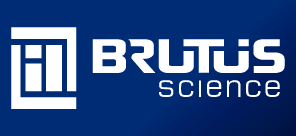
ABSTRACT | Background: Central and peripheral mechanisms may be involved in migraine and tension-type headache pathogenesis, however the role of muscle disorders in their pathophysiological mechanisms remains unclear. Objectives: To assess the association between the presence of migraine or tension-type headache and changes in longus colli muscle dimensions and sternocleidomastoid muscle activity. Method: An observational study with 48 women comparing the following groups: migraine (n=21), tension-type headache (n=16), and control (n=11). The cross-sectional area, lateral and anteroposterior dimensions, and shape ratio of the longus colli muscle were measured using ultrasound. The activation of the sternocleidomastoid muscle was assessed by signal amplitude and the decline in median frequency using surface electromyographic analysis. Results: The dimensions of the longus colli muscle did not differ between groups (p>0.05). Post-test analysis showed lower sternocleidomastoid muscle activation on both sides, at the onset of contraction, in the group with tension-type headache when compared to the control group {right sternocleidomastoid [tension-type headache: 0.39 (0.30-0.49); control: 0.58 (0.42-0.76); p=0.026] and left sternocleidomastoid [tension-type headache: 0.39 (0.31-0.48); control: 0.60 (0.42-0.79); p=0.039], Tukey’s post hoc test}. There was no difference between the three groups in sternocleidomastoid muscle activation, on both sides, at the end of contraction (p>0.05). Intergroup analysis showed no difference in the rate of decline in median frequency (p>0.05). Conclusion: The group with tension-type headache exhibited less activation at the onset of sternocleidomastoid muscle contraction. No association was observed between the presence of headache and alterations in longus colli muscle dimensions, median frequency, and sternocleidomastoid muscle activation at the end of contraction. Keywords: migraine disorders; tension-type headache; neck muscles; ultrasonography; electromyography; movement
| Autor: DÉBORA WANDERLEY | Currículo Lattes |
| Co-autor: Alberto G. Moura Filho | Currículo Lattes |
| Co-autor: Joaquim J. S. Costa Neto | Currículo Lattes |
| Co-autor: Gisela R. Siqueira | Currículo Lattes |
| Co-autor: Daniella A. de Oliveira | Currículo Lattes |
